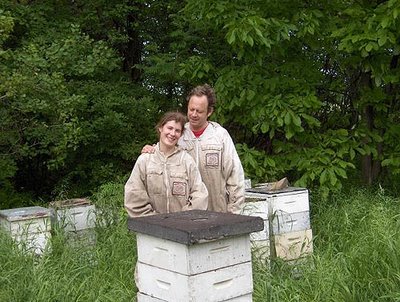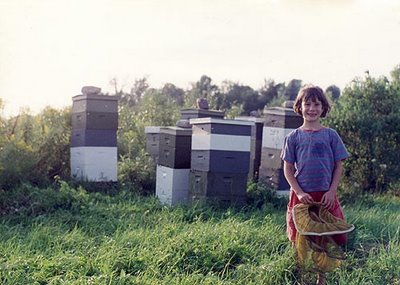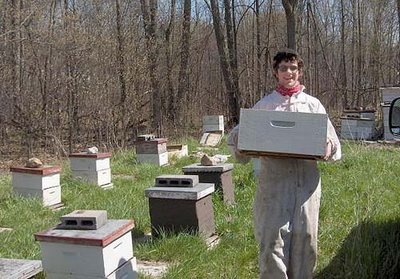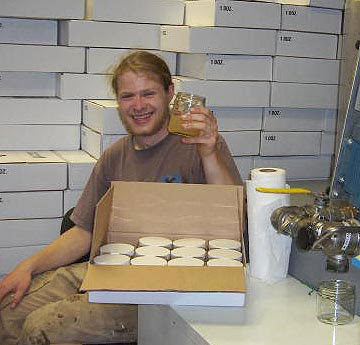raising queen bees from survivors in organic beekeeping
Each of these waxy peanut-shaped cells contains a queen bee that within the hour are placed within a small, four frame mini-hive called a nucleus. After another day a virgin queen will emerge and in another 2 weeks she will be fully mated and laying eggs, the bees collecting nectar and pollen, and the hive well on its way to building up for a long cold winter dormant period.
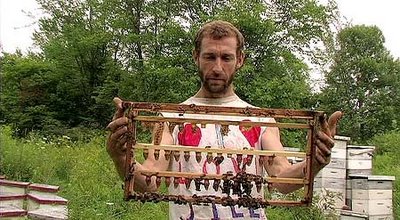
Last year we began to raise our own queens as we saw the promise and success in the work of other northern beekeepers Kirk Webster, Anicet Desrochers, and Mike Palmer.
Through the work of these dedicated beekeepers we have come to an invaluable understanding the value and potential inherent in each apiary. One of our goals at Honey Gardens Apiaries is to gravitate towards raising the kind of bees that can tolerate the mites without chemical treatments. This is by no means a search for the silver bullet but a whole system approach that Kirk Webster and others’ work has inspired here. First, by interrupting the brood cycle of the hive the mite cycle is also interrupted, reducing mite populations and giving the bees a slight advantage. The new queen imparts a vigor and enthusiasm to the hive which seems to have a negative effect on the mites. Secondly, the colonies that survive the winter build up with tremendous energy in the spring and can be used to replace the honey producing colonies that succumbed to the mites. Thirdly, by continuing to remove and split failing colonies we will improve the overall productivity, survivability and sustainability of the apiary. Lastly, by splitting a failing hive in the summer, we are renewing the valuable resource of the bees and the brood and increasing the potential of the apiary as a whole. Our bottom line here is not honey production, though we do want to cover our expenses, our heart is to raise bees to survive, to thrive here in our bioregion, to learn what these bees need in our increasingly stressful world.
We can no longer afford to harvest without thanksgiving. It is time to return the love, admiration, and understanding to the world beyond ourselves. These little queen cells are a possible bridge to the great grandchildren that we will never know that they may also hear the hum of a hive, to see the magic of a burning candle, to marvel at bees sipping at flowers, to be in awe of a swarm in flight, to be close to the oneness of the hive.
“we are not human beings having a spiritual experience rather we are spiritual beings having a human experience” ~Pierre Teilhard de Chardin
gathering plant medicine from the land
Last week I traveled up north to the Champlain Islands with Charlotte and Macky to gather purple loosestrife. This herb offers its healing gifts in the Propolis Spray. It is styptic (helps stop bleeding), antibiotic, and astringent (contracts tissues, draws out infection). This spray is used to help heal wounds and sore throats, as well as to heal and strengthen the gums. Purple loosestrife can also be used internally to control diarrhea and heavy periods. This is generally done with a decoction of the dried flowers.
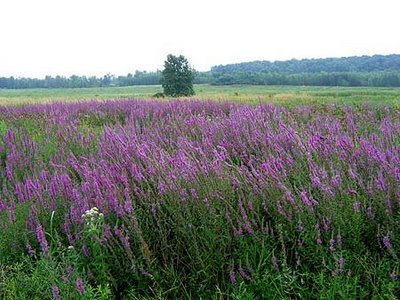
Purple loosestrife (Lythrum salicaria) has a complicated past, as it was brought over from Eurasia in the 1800’s, both inadvertently and as a landscape plant. It has since spread though waterways and marshlands, and is now considered an invasive and noxious weed. It tends to crowd out native plants such as cattails, sedges and bulrushes, decreasing forage and habitat for wildlife. On the other hand, honey bees and other pollinating insects gather tons of nectar each summer from the flowers. They have come to rely upon on it in dry years as it blooms well in the marshlands even then. Since 1995 Vermont state agencies have been releasing several European insects to control the spread of this plant.
As far as we know, we have the only permit in the state of Vermont to harvest purple loosestrife. We choose to appreciate the gifts it has to offer, rather than to fight against it. And although we certainly do not encourage the spread of this plant, we do feel a bit of loss as it disappears from our area, and we must travel further to find it for use as medicine.
There are a number of species that have been introduced to this area, not to mention honey bees (brought from Europe in the early 1600’s), which have been beneficial in many ways. A wise local community herbalist recently spoke about how the native people of Vermont, the Abenaki, took on dandelion and burdock as their staple foods. These are two highly nutritious, yet non-native species that could be used to our healthful benefit, not just seen as a nuisance in the lawn or pasture.
Another wise woman shared with me that the flower essence of the purple loosestrife is used to help us fulfill our greatest potential. We hope that the plants and their stewards may all achieve this goal.
The first fruits of the new crop of honey are now in the honey house. For over 2,000 years the first fruits have always carried a spirit of thankfulness and gratitude. The beginning of the new crop is a very special light honey we savor these gifts that spring from the land and appreciate your support of our bees and their work.
